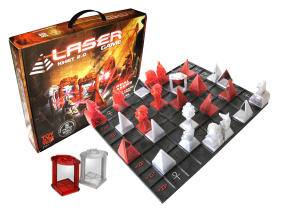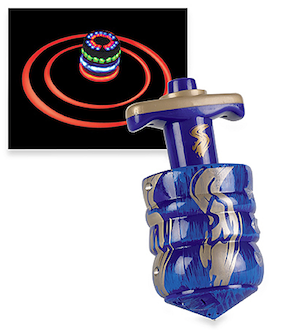Home
A comprehensive resource for safe and responsible laser use
US: FDA issues guidance on lasers in toys; wants Class 1 only
In addition to toys with visible beams that are dimmer than laser pointers, the other type of children’s Class 1 laser products are those that have internal, inaccessible lasers. For example, the laser inside a CD or DVD player device is often Class 3B — well above 5 mW. But because the beam cannot be accessed under normal conditions, the entire device is Class 1.
What laser toy products are included
FDA’s guidance is for “children’s toy laser products”, defined by the agency as “a product primarily used as a toy that is manufactured, designed, intended or promoted for novelty or visual entertainment use by children under 14 years of age.” It does not include “laser products that are used in professional or academic settings that may be used by children (for example, laser printers, CD players, educational and science kits).”
To determine if a laser product is a toy, FDA takes into account factors such as the promotion and product graphics (for example, if children are shown playing with the product), the location of sales such as toy stores or websites, and whether features or the nature of the product may indicate it is intended for children.
The agency gives examples of children’s toy laser products:
- Lasers mounted on toy guns that can be used for “aiming”
- Spinning tops that project laser beams while they spin
- Hand-held lasers used during play as “light sabers”
- Dancing laser beams projected from a stationary column with bright colors or pictures on the box that might appeal to children
- Lasers intended for entertainment that create optical effects in an open room with bright colors or pictures on the box that might appeal to children.
What existing laser toy products might be affected
A Google search in late 2013 by LaserPointerSafety.com found relatively few toys that contained actual lasers. (Often a toy which had “laser” in the name used conventional or LED lights instead of a real laser.)
One toy that would be banned under FDA’s guidance is The Laser Game Khet 2.0. This is a winner of multiple toy-industry awards. Players move chess-piece style mirrors to block or pass a Class 2 (less than 1 mW) red laser beam. Like a laser pointer, the beam is emitted momentarily, only when the top of the laser-containing game piece is pressed. (From a safety standpoint, the game piece works just like a Class 2 laser pointer. It can be held in the hand and aimed anywhere.) Khet 2.0 is advertised as for players 9 years old and older.
FDA’s guidance specifically mentioned another Class 2-emitting toy currently on the market. This is a laser dreidel which emits two beams onto a floor, only while spinning. In LaserPointerSafety.com’s tests, we were unable to force the lasers to emit unless the device was spinning on a surface.
Number of injuries reported due to laser-containing toys
A 2013 review by LaserPointerSafety.com of 3,757,405 U.S. emergency room visits from 2003 through 2012 found 52,827 visits were due to toy-related injuries to children from 0 to 14. None of these toy injuries were due to lasers in a toy.
For non-toy lasers over the same decade, there were a total of seven reports of children 0-14 who had laser pointers aimed into their eyes (self-inflicted or from others) and who went to a U.S. emergency room for treatment. Two of these cases appeared to result in serious or permanent eye effects.
Limits of FDA guidance, and future action
The December 19 2014 document, “Minimizing Risk for Children’s Toy Laser Products," notes at the top of each page that it “contains nonbinding recommendations.” In the introduction, FDA further notes:
- “FDA's guidance documents, including this guidance, do not establish legally enforceable responsibilities. Instead, guidances describe the Agency's current thinking on a topic and should be viewed only as recommendations, unless specific regulatory or statutory requirements are cited. The use of the word should in Agency guidances means that something is suggested or recommended, but not required.”
On June 24 2013, FDA published a notice of proposed rulemaking which, among other provisions, would create binding, legally enforceable regulation of children’s laser toy products. On August 7 2013, FDA published a draft version of the guidelines; the final version was published December 19 2014.
There are some differences between the August 2013 draft and the December 2014 final guidance document. FDA clearly responded to comments and suggestions about the draft version.
To give one example, originally one of the examples of a children’s toy laser product was “Lasers intended for entertainment that create optical effects in an open room.” This could ban any laser device — for children or not — creating optical effects. This definition was changed in the final guidance document to “Lasers intended for entertainment that create optical effects in an open room with bright colors or pictures on the box that might appeal to children.”
The December 19 2014 guidance document is nonbinding and not legally enforceable. It is not known if eventually FDA will go all the way to a full regulation, or if guidance is the best they can accomplish under their current legal authority.
From FDA’s “Minimizing Risk for Children’s Toy Laser Products” Guidance for Industry and Food and Drug Administration Staff, issued December 19 2014. On the same date, FDA also updated their page summarizing this issue for the general public, “Laser Toys: Not Always Child’s Play.”

